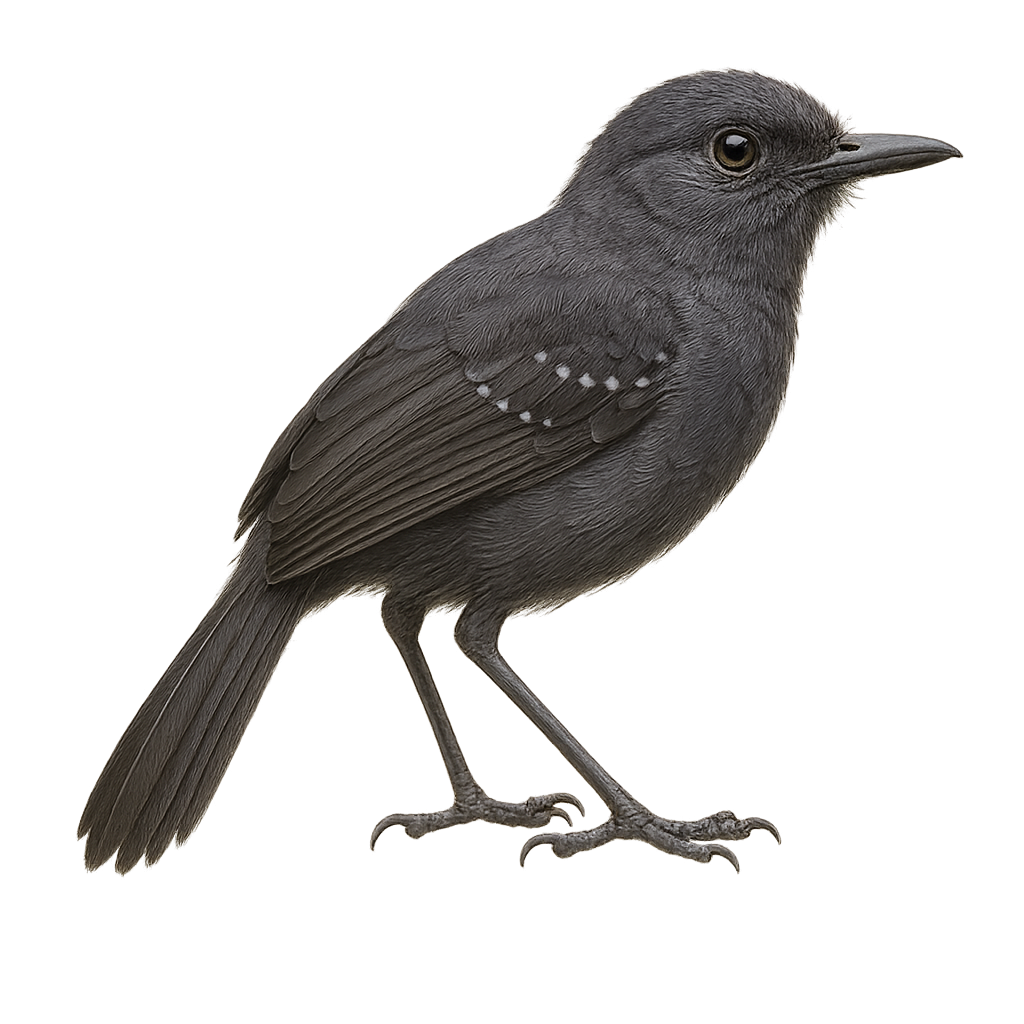Your wildlife photography guide.
Explore the dusky antbird in detail, study its behavior, prepare your shots.
Where to observe and photograph the dusky antbird in the wild
Learn where and when to spot the dusky antbird in the wild, how to identify the species based on distinctive features, and what natural environments it inhabits. The WildlifePhotographer app offers tailored photography tips that reflect the dusky antbird’s behavior, helping you capture better wildlife images. Explore the full species profile for key information including description, habitat, active periods, and approach techniques.
Dusky Antbird
Scientific name: Cercomacroides tyrannina

IUCN Status: Least Concern
Family: THAMNOPHILIDAE
Group: Birds
Sensitivity to human approach: Suspicious
Minimum approach distance: 5 m
Courtship display: March to April
Incubation: 17-19 jours
Hatchings: March to May
Habitat:
Humid tropical forests, dense undergrowth
Activity period :
Primarily active during the day, with peak activity in the morning and late afternoon.
Identification and description:
The Dusky Antbird, or Cercomacroides tyrannina, is a small bird from the Thamnophilidae family, primarily found in the humid tropical forests of Central and South America. It is characterized by its dark gray, almost black plumage, and piercing red eyes. Males and females exhibit sexual dimorphism, with females having browner hues. This bird is often seen in pairs or small groups, moving through the undergrowth in search of insects. Although discreet, its distinctive call, a high-pitched whistle, often reveals its presence. The Dusky Antbird plays a crucial role in the ecosystem by regulating insect populations.
Recommended lens:
400 mm – adjust based on distance, desired framing (portrait or habitat), and approach conditions.
Photography tips:
To photograph the Dusky Antbird, it is advisable to use a telephoto lens of 400mm or more to capture detailed images without disturbing the bird. Look for it in the dense undergrowth of humid tropical forests, where it is often active during the day. Be patient and attentive to its distinctive call to locate its position. Use a tripod to stabilize your camera in the low-light conditions of the forest.
The WildlifePhotographer App is coming soon!
Be the first to explore the best nature spots, track rutting seasons, log your observations, and observe more wildlife.
Already 1 432 wildlife lovers subscribed worldwide

